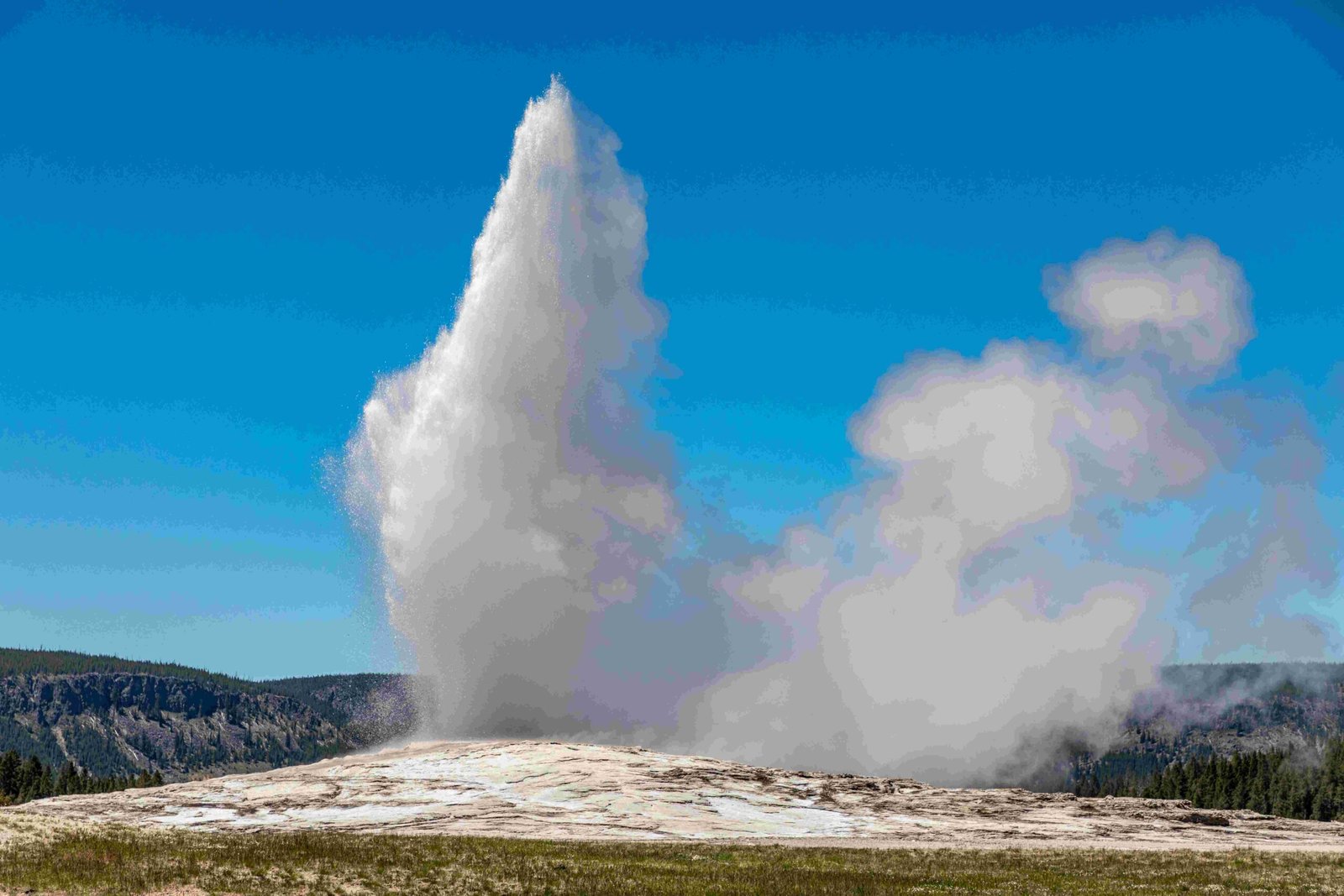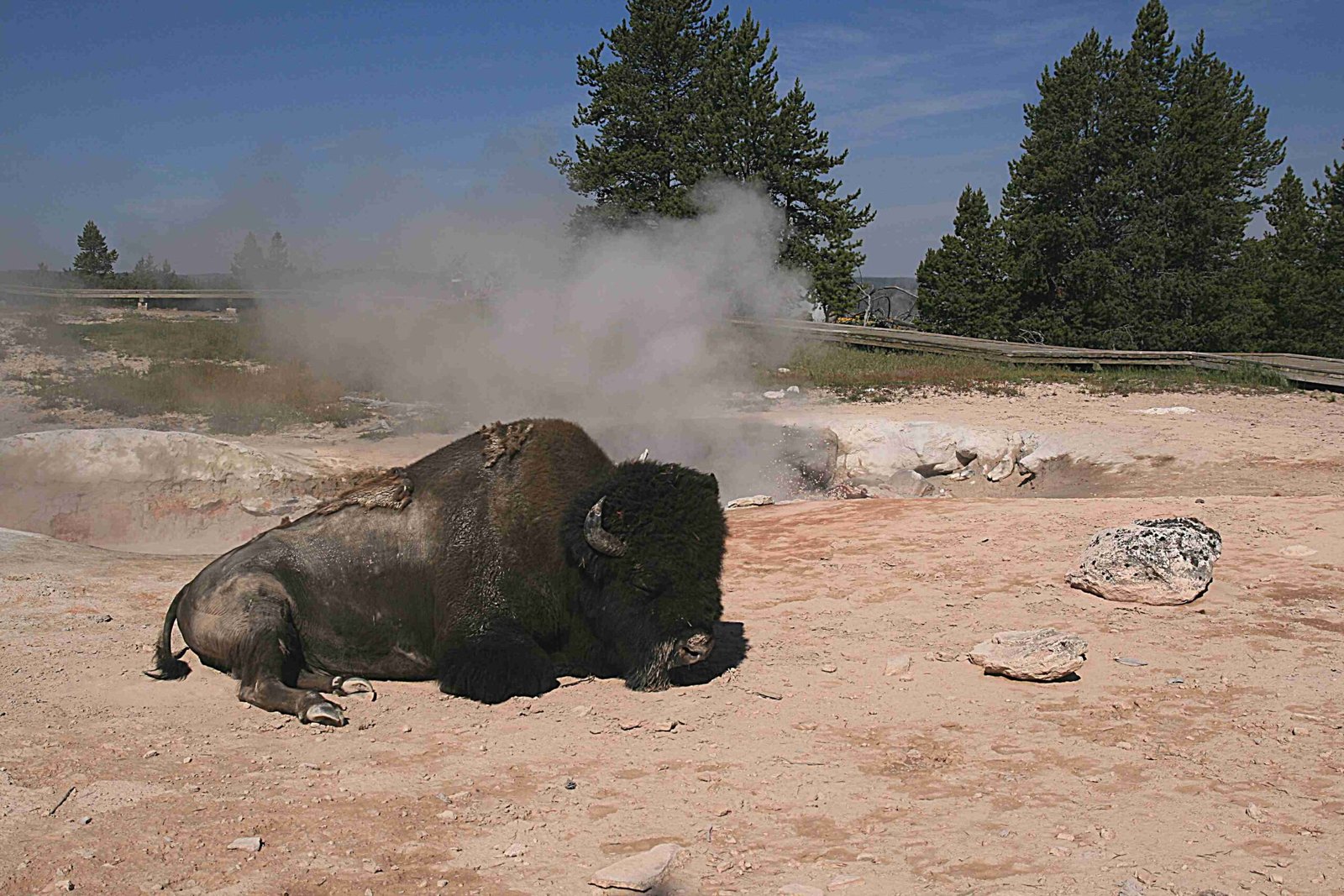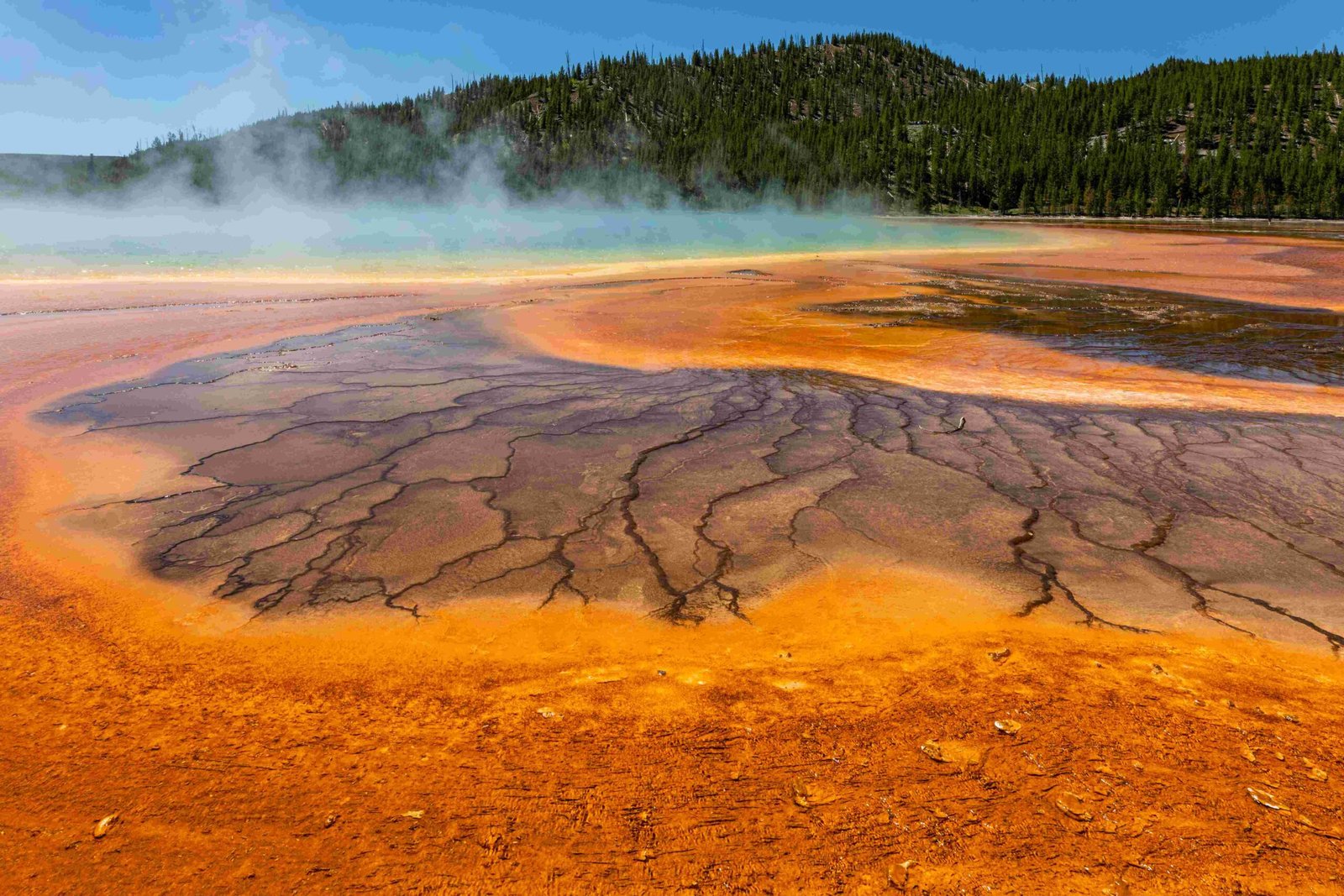Virginia Cascades in Yellowstone National Park is a stunning 60-foot waterfall nestled in a densely forested canyon. This hidden gem offers visitors a chance to experience the park’s natural beauty away from the crowds. The cascades are accessible via a 2-mile moderate hiking trail or a scenic drive along Virginia Cascade Drive. With its unique geological features, diverse wildlife, and photogenic landscape, Virginia Cascades is a must-visit destination for nature enthusiasts and photographers alike.
What Makes Virginia Cascades Unique in Yellowstone National Park?

Virginia Cascades stands out among Yellowstone’s many waterfalls due to its secluded location and the way the water gracefully cascades down polished rocks, creating a mesmerizing slide-like effect. The area surrounding the cascades is rich in history, featuring remnants of the old stagecoach road, including stone retaining walls and the historic Devil’s Elbow section. These unique characteristics make Virginia Cascades a special attraction within the park.
How Can Visitors Access Virginia Cascades?

There are two primary ways to access Virginia Cascades:
- Hiking Trail:
- Length: 2.0 miles (one-way)
- Elevation gain: 266 feet
- Difficulty: Moderate
-
Trailhead location: Virginia Cascade Drive
-
Scenic Drive:
- Virginia Cascade Drive: A one-way road branching off the main road between Norris Geyser Basin and Canyon Village
- Distance: Approximately 1.7 miles east of Norris Junction or 9.9 miles west of Canyon Junction
Visitors can choose between a scenic hike or a leisurely drive, depending on their preferences and physical abilities.
What Wildlife Can Be Observed Near Virginia Cascades?
While exploring Virginia Cascades, visitors have the opportunity to encounter various wildlife species. The most commonly observed animals in the area are yellow-bellied marmots. These furry creatures are frequently seen basking on rocks near the road or scurrying along the trail.
| Wildlife Species | Behavior Patterns | Best Observation Times |
|---|---|---|
| Yellow-bellied Marmots | Active during daylight hours, often seen on rocks | Spring and summer months |
It’s important to remember that while wildlife sightings can enhance your experience, maintaining a safe distance and not disturbing the animals is crucial for both your safety and theirs.
What Are the Best Photography Tips for Capturing Virginia Cascades?
For photographers looking to capture the beauty of Virginia Cascades, consider the following tips:
-
Timing: Visit in the afternoon to avoid harsh sunlight and capture the waterfall with softer, more favorable light.
-
Camera Settings:
- Use a slower shutter speed (1-5 seconds) to create a smooth, flowing water effect
-
Employ a polarizing filter to reduce glare and enhance colors
-
Vantage Points:
- Hike down closer to the water for the best views (be cautious of steep and slippery terrain)
-
Utilize small pull-offs along Virginia Cascade Drive for alternative perspectives
-
Safety: Be mindful of loose rocks and unstable ground when positioning yourself for shots
What Is the Best Time to Visit Virginia Cascades?
The ideal time to visit Virginia Cascades depends on your priorities:
- For Photography: Afternoon hours provide the best lighting conditions, as the waterfall faces west.
- For Wildlife Viewing: Spring and summer months offer increased chances of spotting active yellow-bellied marmots.
- For Water Flow: Late spring and early summer typically provide the most impressive water flow due to snowmelt.
Keep in mind that Yellowstone’s weather can be unpredictable, so it’s always wise to check current conditions before your visit.
How Does Virginia Cascades Compare to Other Yellowstone Waterfalls?
While Yellowstone is home to numerous impressive waterfalls, Virginia Cascades offers a unique experience:
- Size: At 60 feet, it’s not the tallest waterfall in the park, but its cascading nature creates a distinctive visual appeal.
- Accessibility: Less crowded than popular falls like Lower Falls, offering a more serene experience.
- Surrounding Area: Rich in historical features and geological formations, providing additional points of interest.
| Feature | Virginia Cascades | Lower Falls (for comparison) |
|---|---|---|
| Height | 60 feet | 308 feet |
| Crowd Level | Low to Moderate | High |
| Accessibility | Moderate hike or scenic drive | Multiple viewpoints, some requiring strenuous hikes |
What Historical Significance Does Virginia Cascades Hold?
The area around Virginia Cascades is steeped in Yellowstone’s early tourism history:
- Old Stagecoach Road: Remnants of the historic road that once carried visitors through the park can still be seen.
- Devil’s Elbow: A notorious section of the old road, known for its sharp turn and challenging passage.
- Stone Retaining Walls: These structures showcase early park infrastructure and engineering techniques.
These historical elements provide a glimpse into Yellowstone’s past and how visitors experienced the park in its early days.
How Can Visitors Prepare for a Trip to Virginia Cascades?
To ensure a safe and enjoyable visit to Virginia Cascades, consider the following preparations:
- Proper Footwear: Wear sturdy hiking shoes with good traction for navigating potentially slippery terrain.
- Weather Appropriate Clothing: Dress in layers, as Yellowstone’s weather can change rapidly.
- Water and Snacks: Bring sufficient water and energy-boosting snacks, especially if planning to hike.
- Navigation Tools: Carry a map of the area, as cell service can be unreliable.
- Camera Equipment: If planning to photograph, bring a tripod for stability during long exposures.
- Wildlife Safety: Familiarize yourself with park guidelines for wildlife encounters.
By following these tips, visitors can maximize their experience at Virginia Cascades while staying safe and respectful of the natural environment.
What Conservation Efforts Are in Place to Protect Virginia Cascades?
Yellowstone National Park implements various conservation measures to protect natural features like Virginia Cascades:
- Trail Maintenance: Regular upkeep of the hiking trail to prevent erosion and ensure visitor safety.
- Visitor Education: Informational signage and ranger programs to promote responsible tourism.
- Wildlife Protection: Strict regulations on wildlife interaction and habitat preservation.
- Water Quality Monitoring: Ongoing assessment of water quality to maintain the health of the ecosystem.
Visitors can contribute to these efforts by adhering to park rules, practicing Leave No Trace principles, and reporting any concerns to park staff.
In conclusion, Virginia Cascades offers a unique blend of natural beauty, historical significance, and outdoor adventure within Yellowstone National Park. Whether you’re a photographer seeking the perfect shot, a history buff interested in early park infrastructure, or simply a nature lover looking for a peaceful retreat, Virginia Cascades provides a memorable experience away from the park’s more crowded attractions.
References:
1. Gaia GPS – Virginia Cascades via Virginia Cascade Drive
2. YouTube – Virginia Cascades Know Yellowstone Before You Go
3. World of Waterfalls – Virginia Cascade

